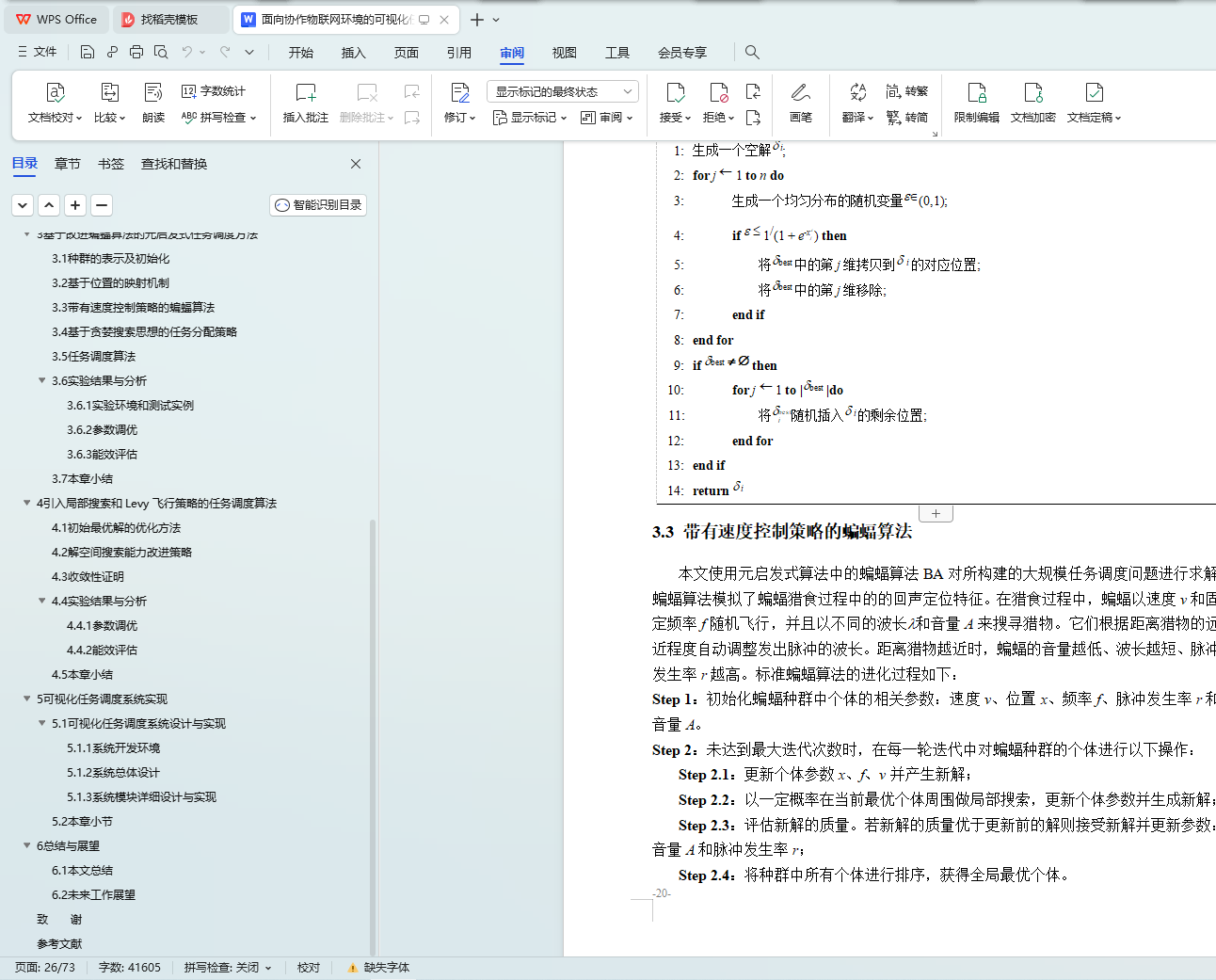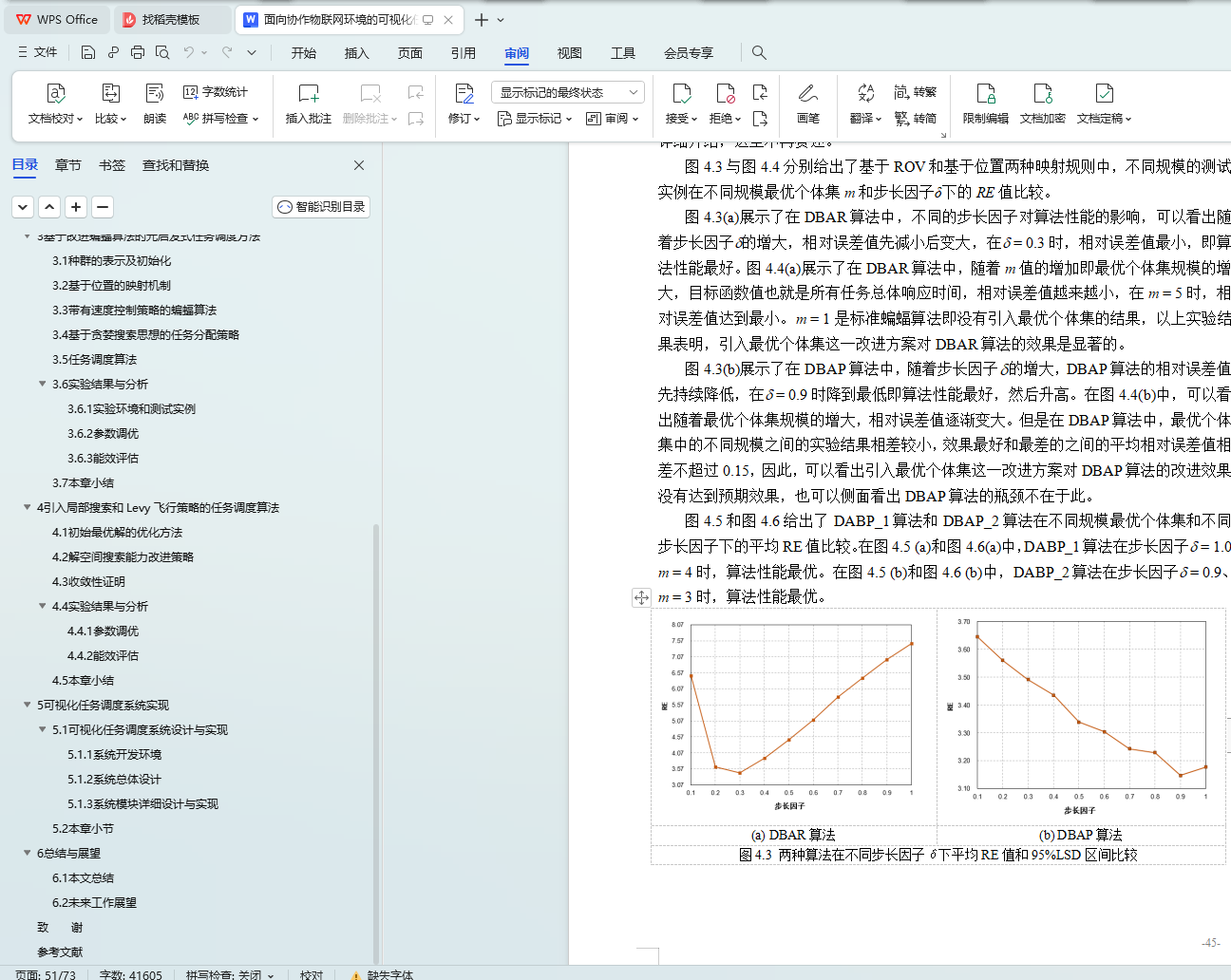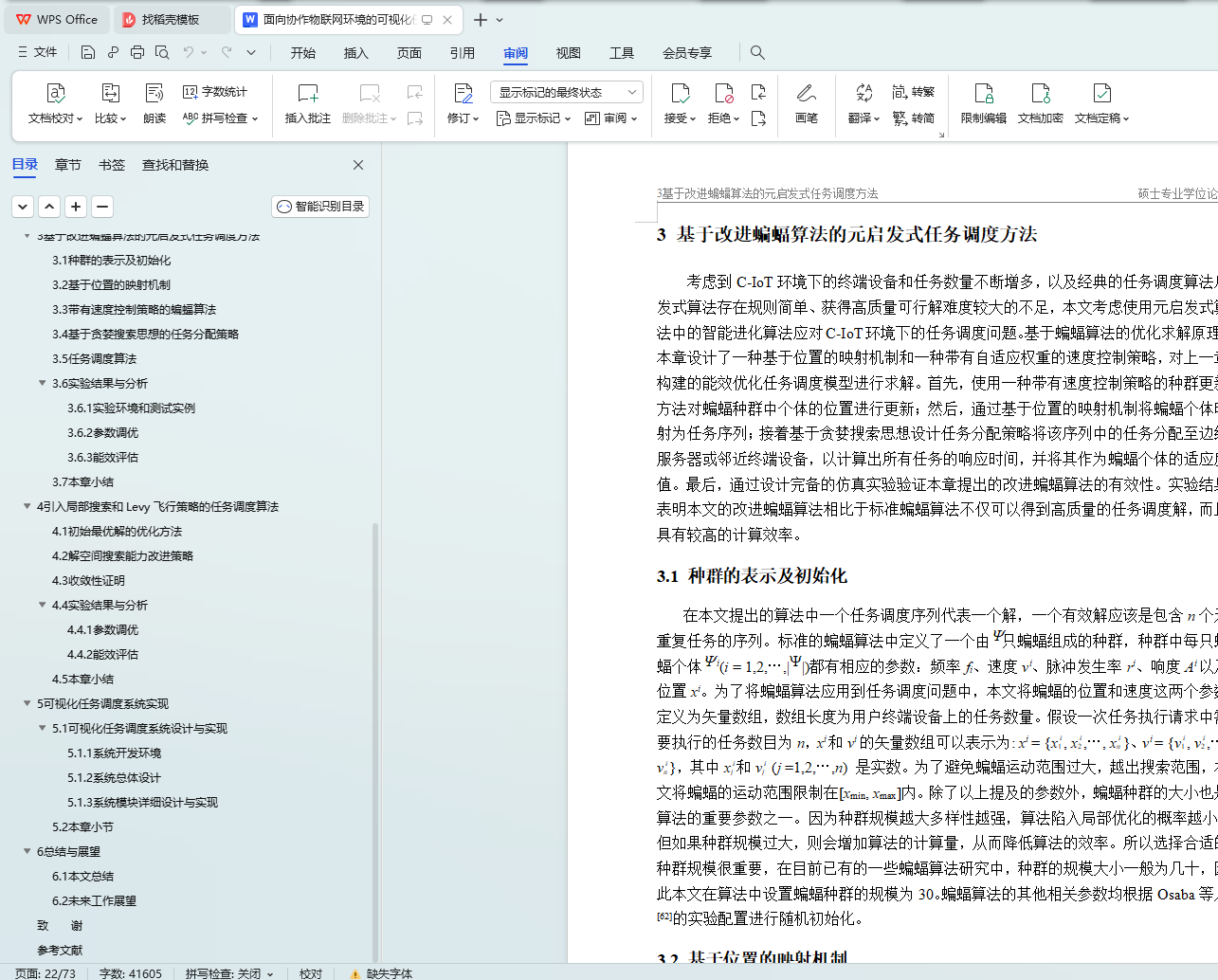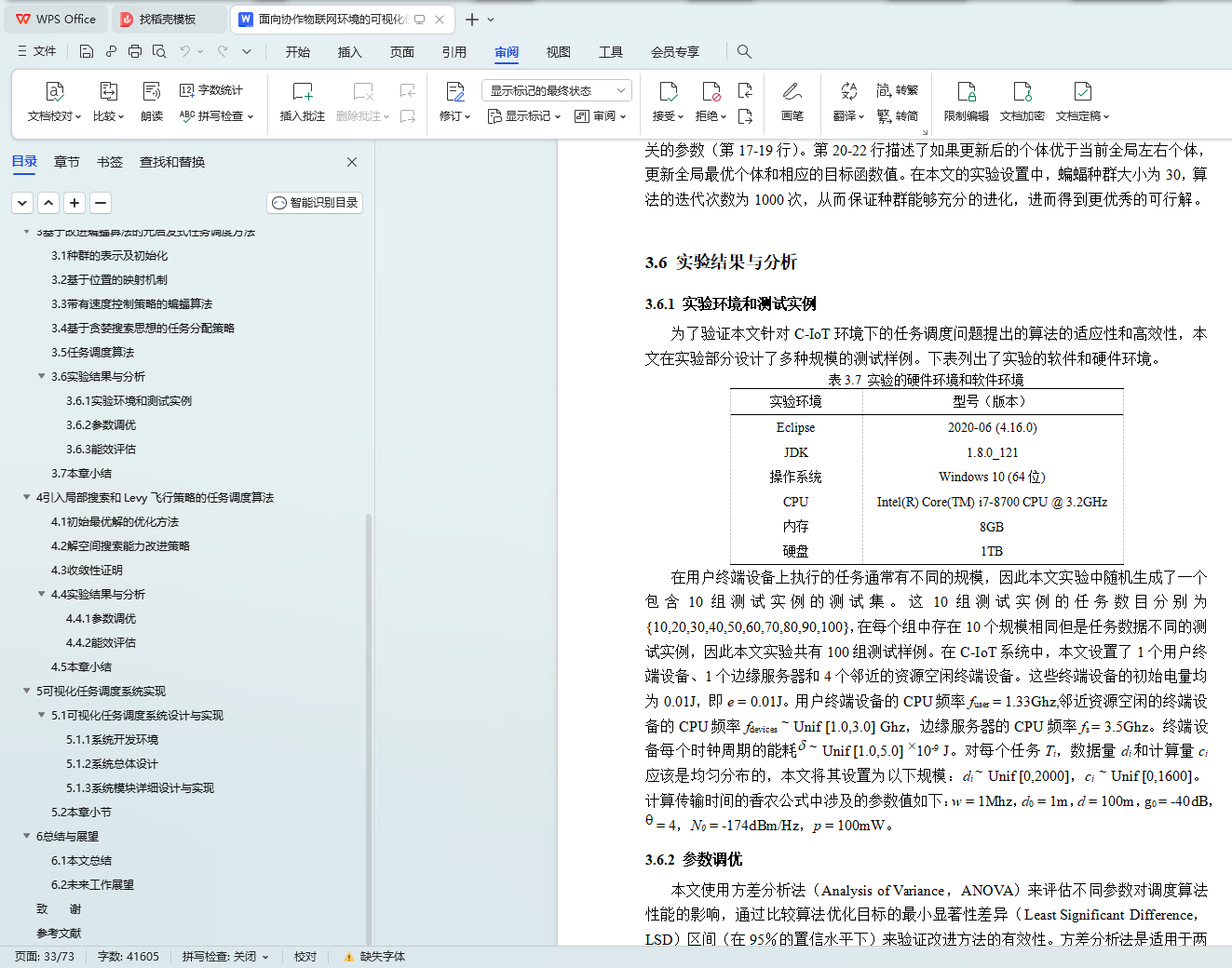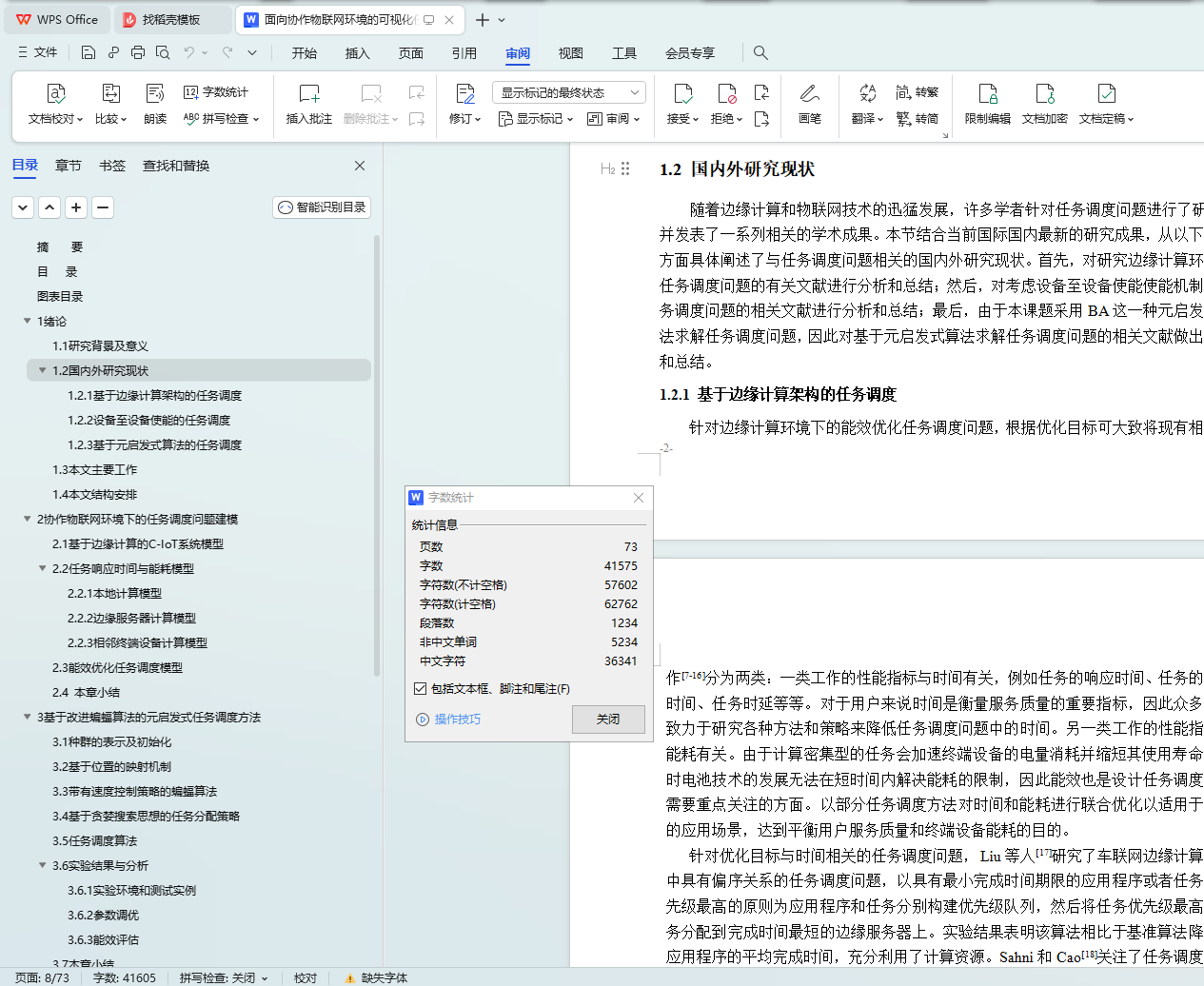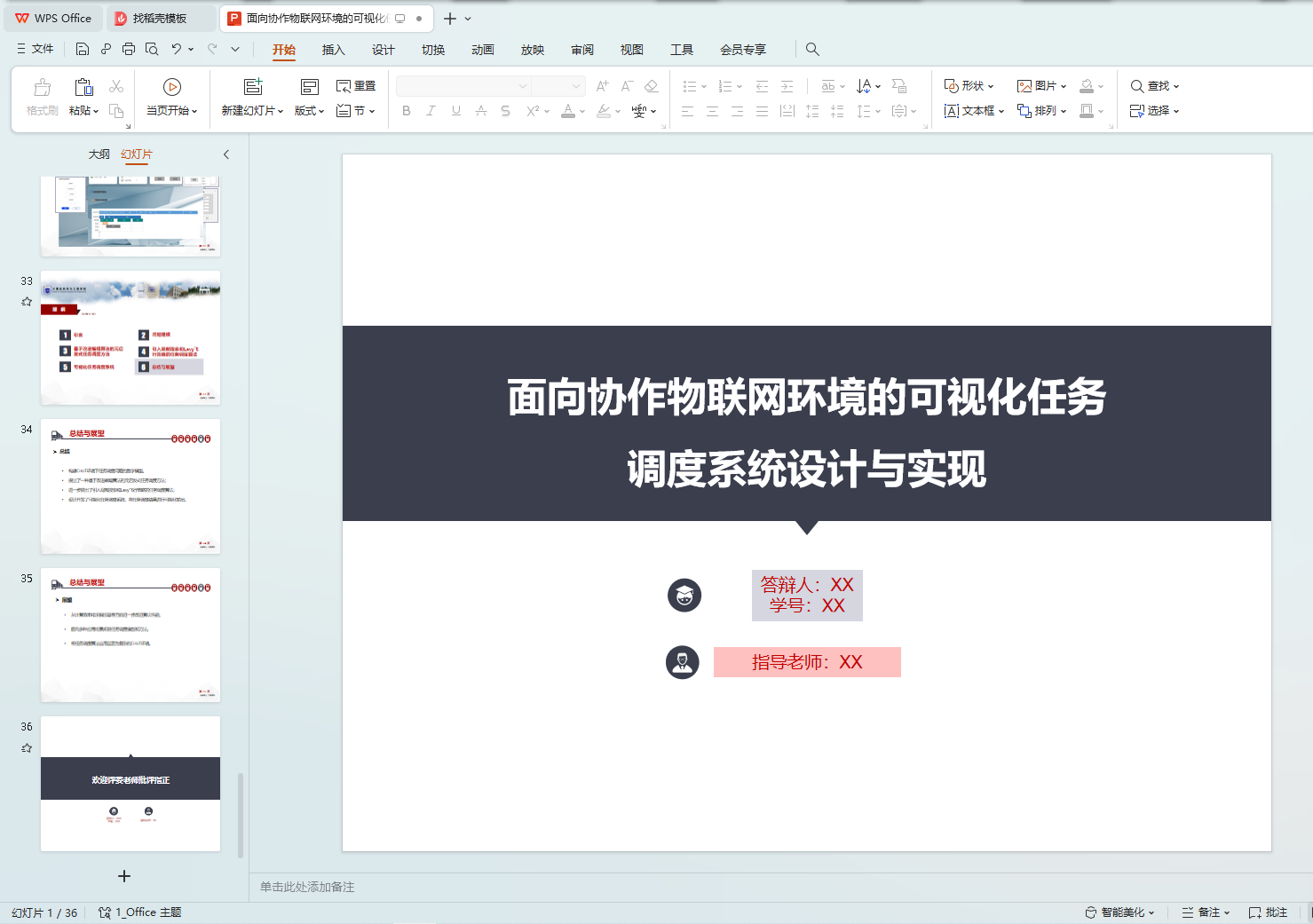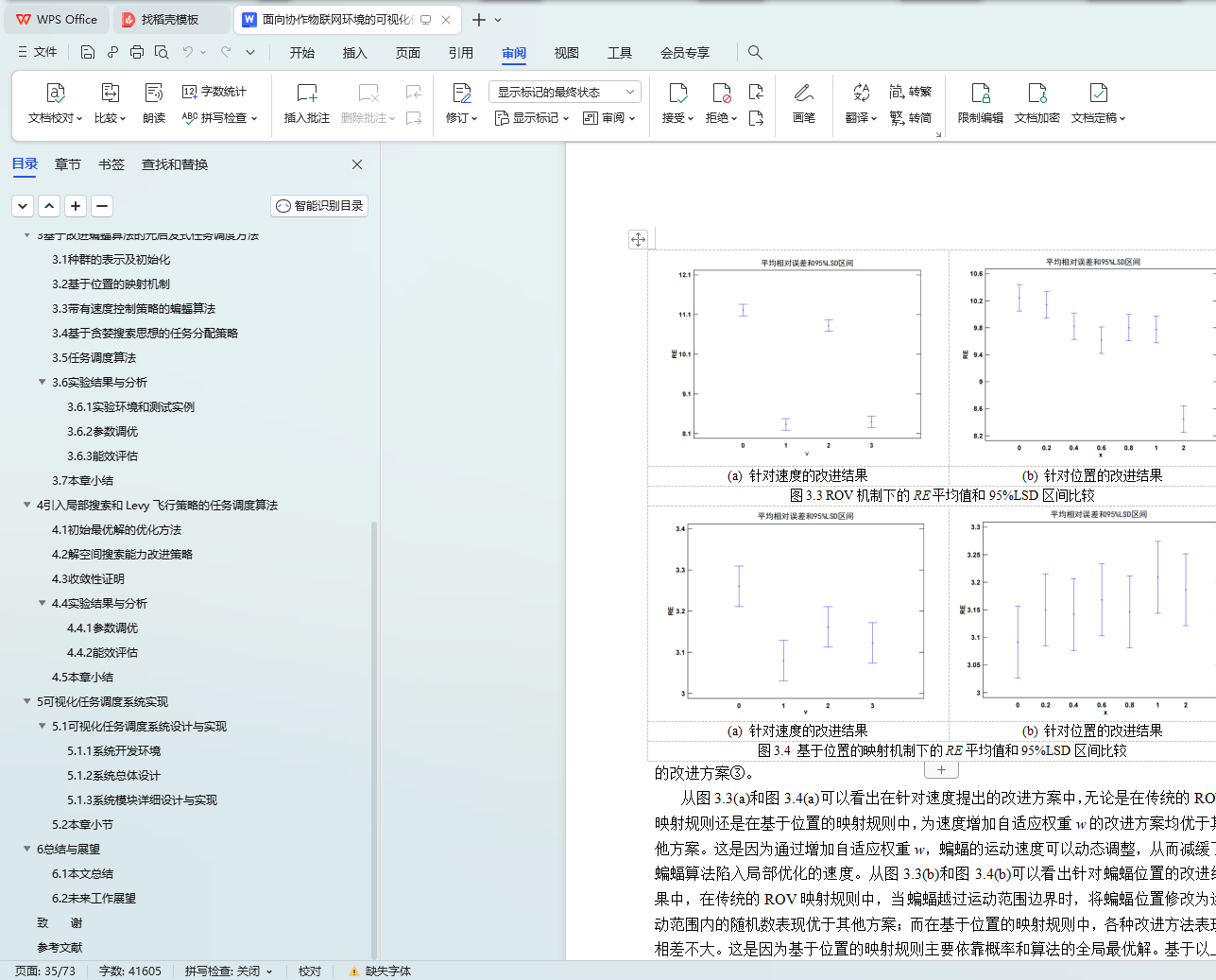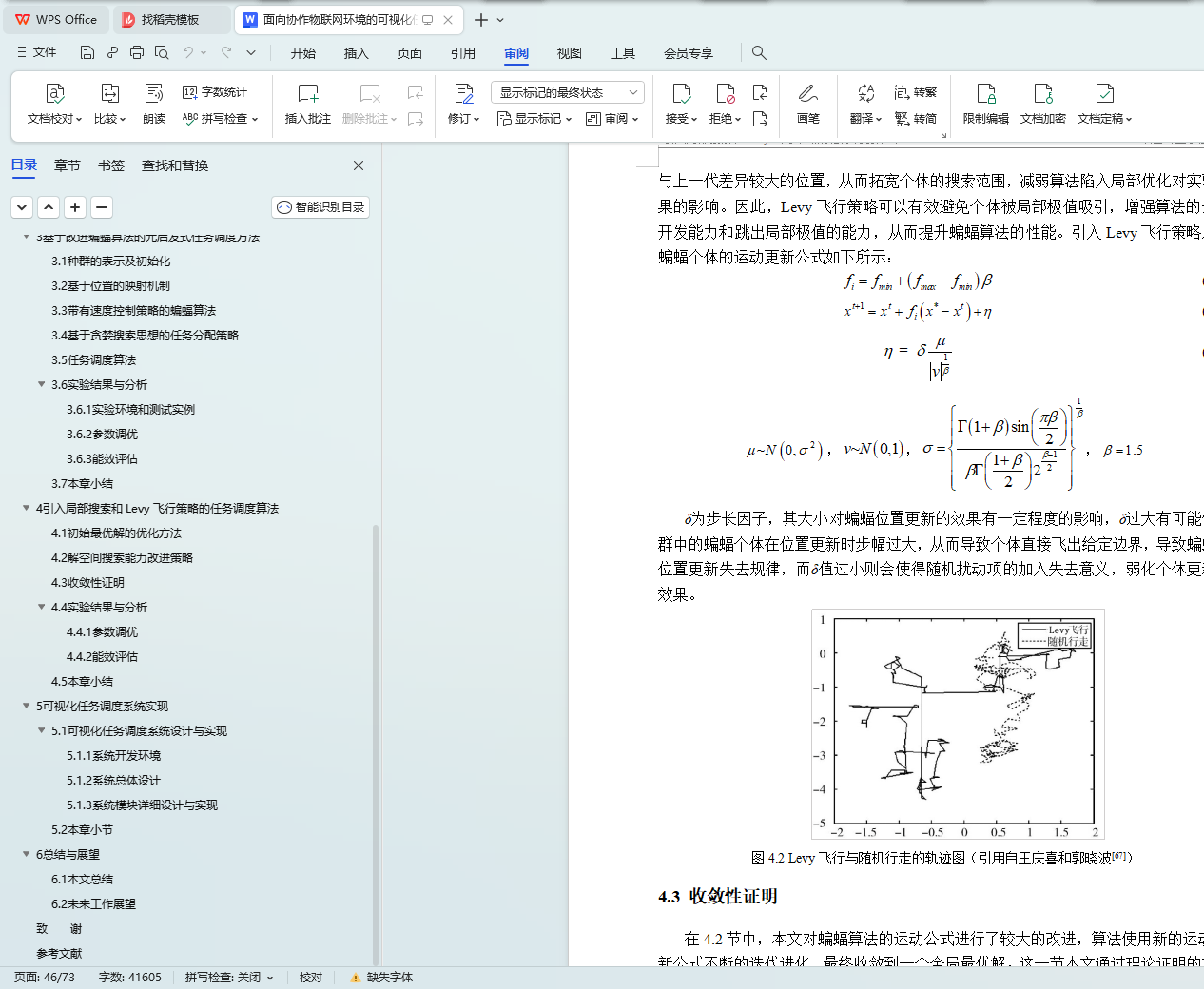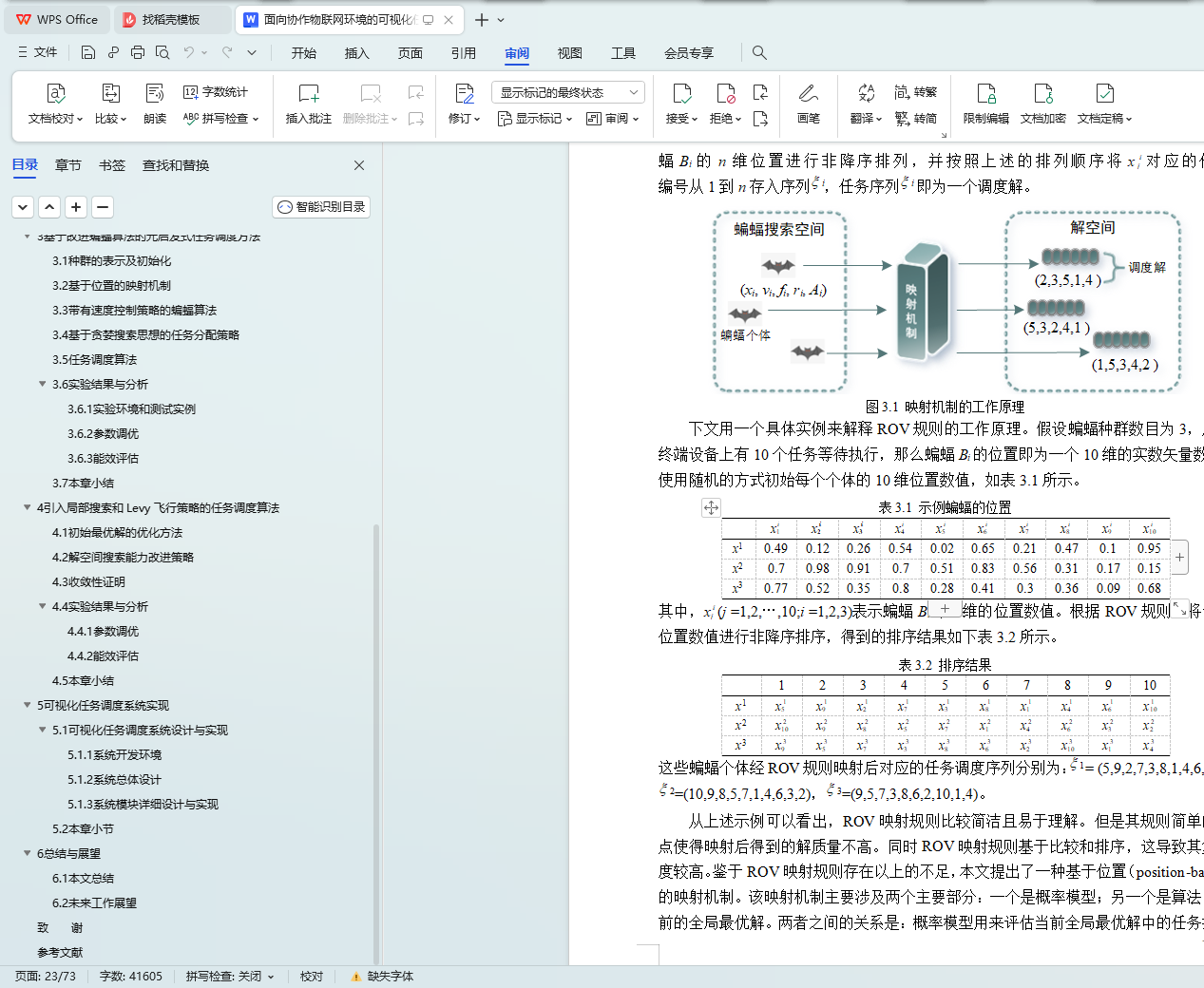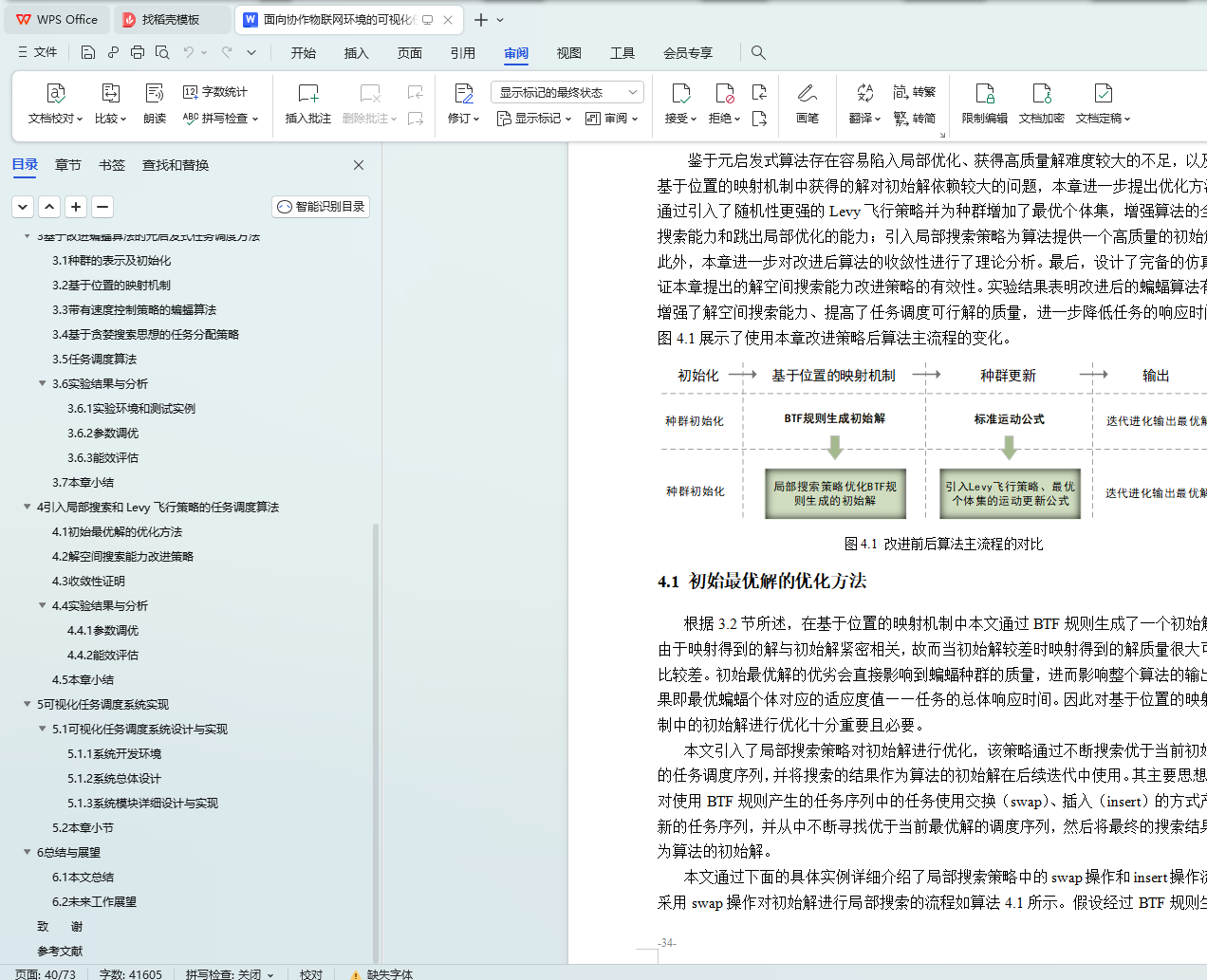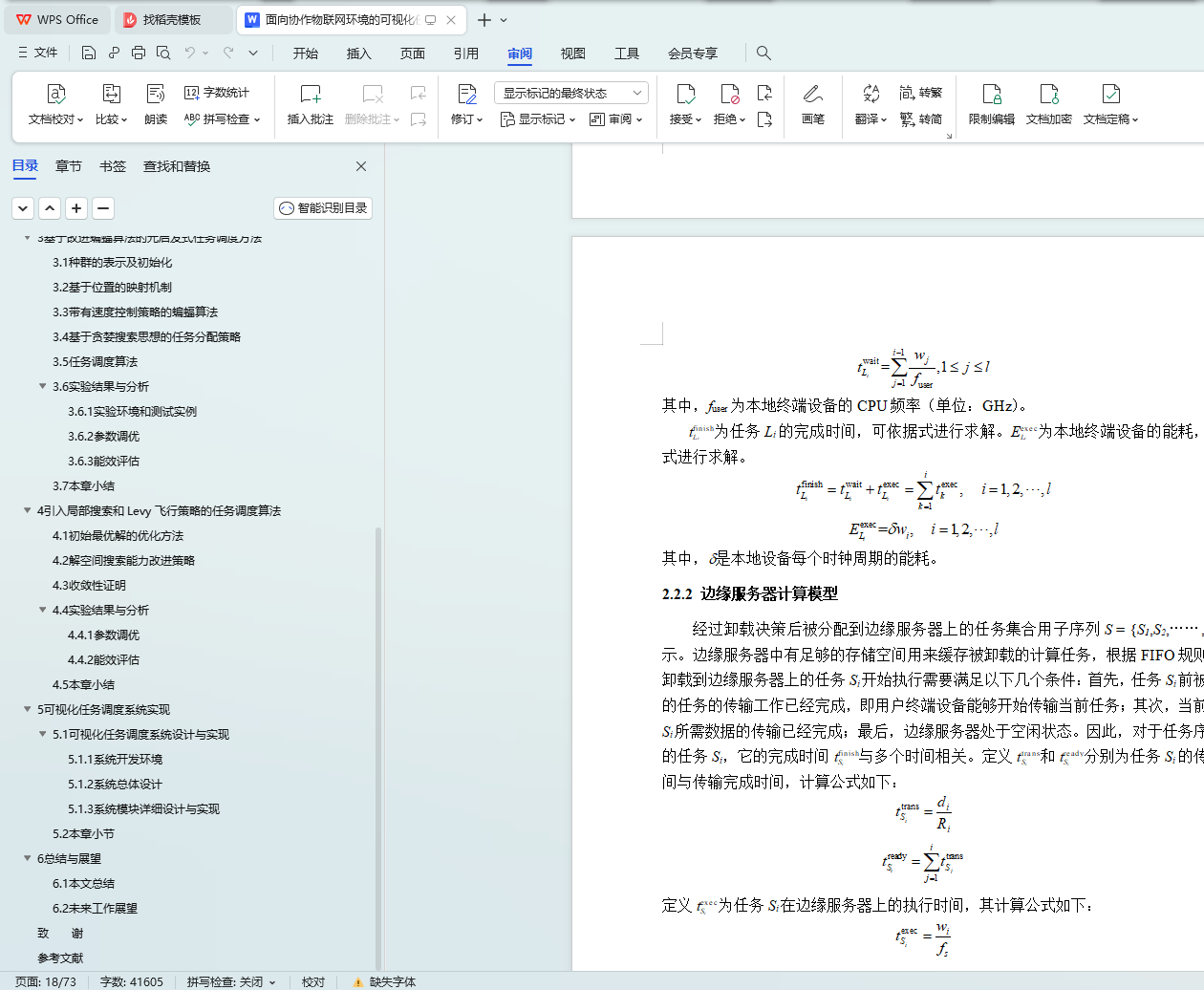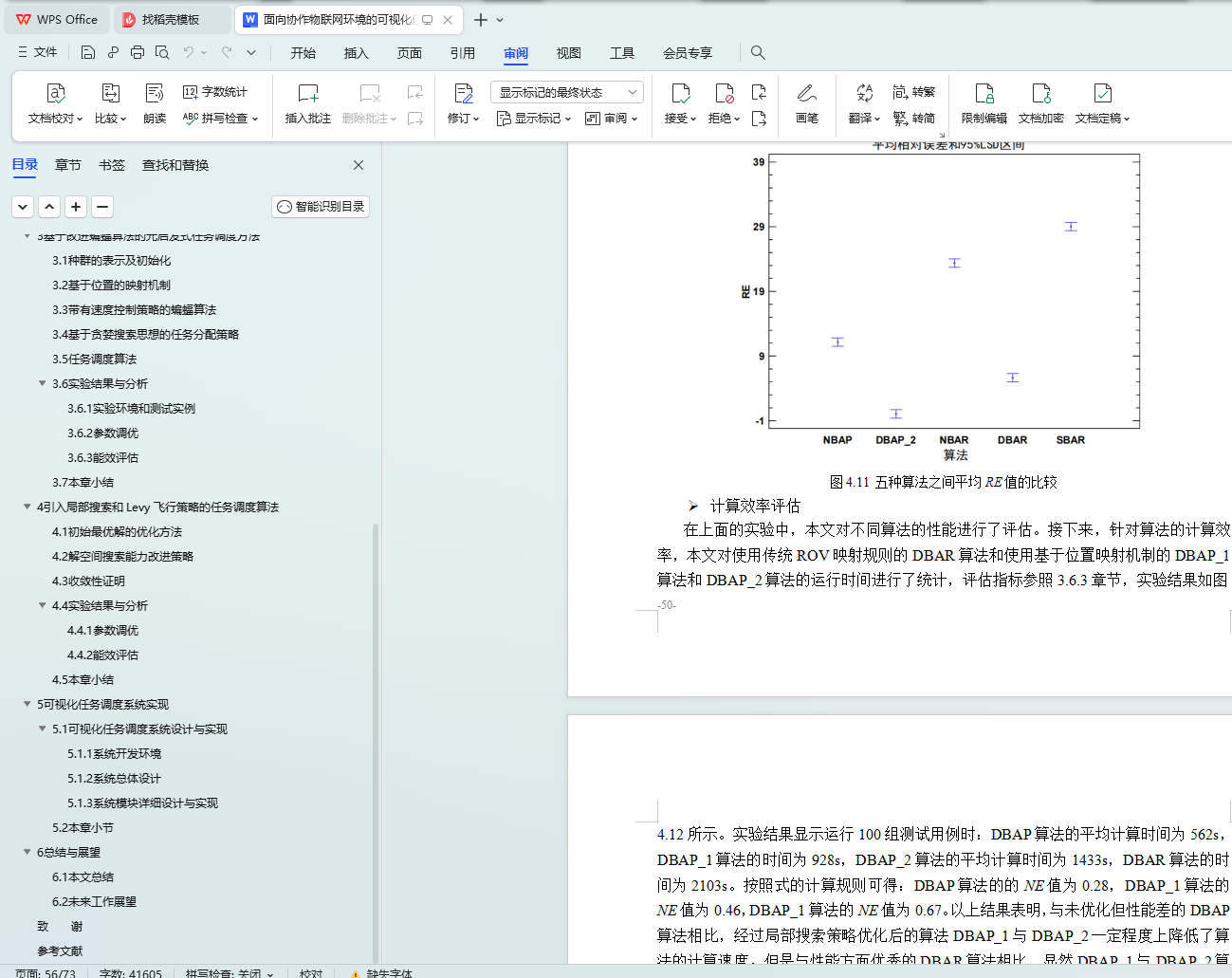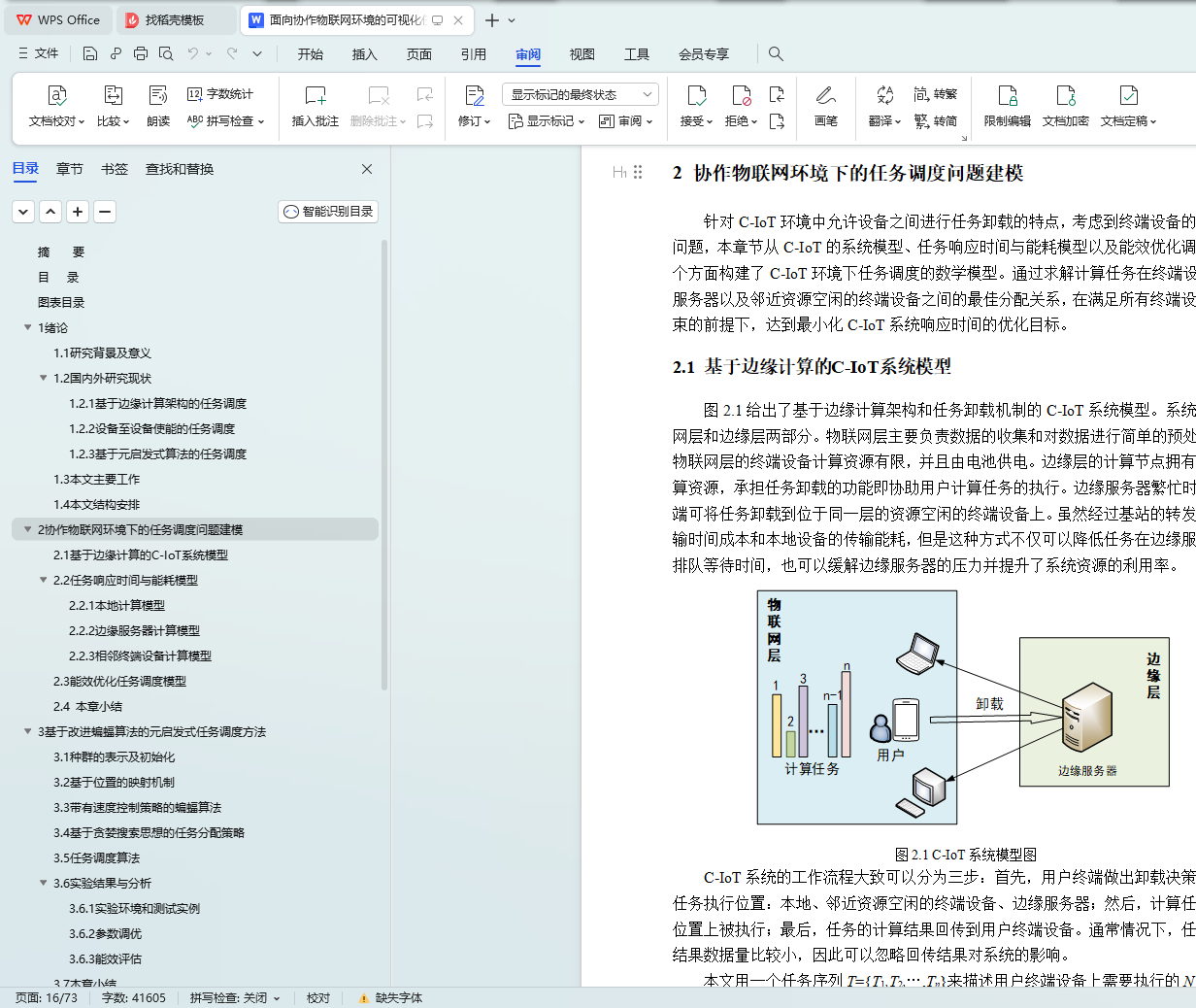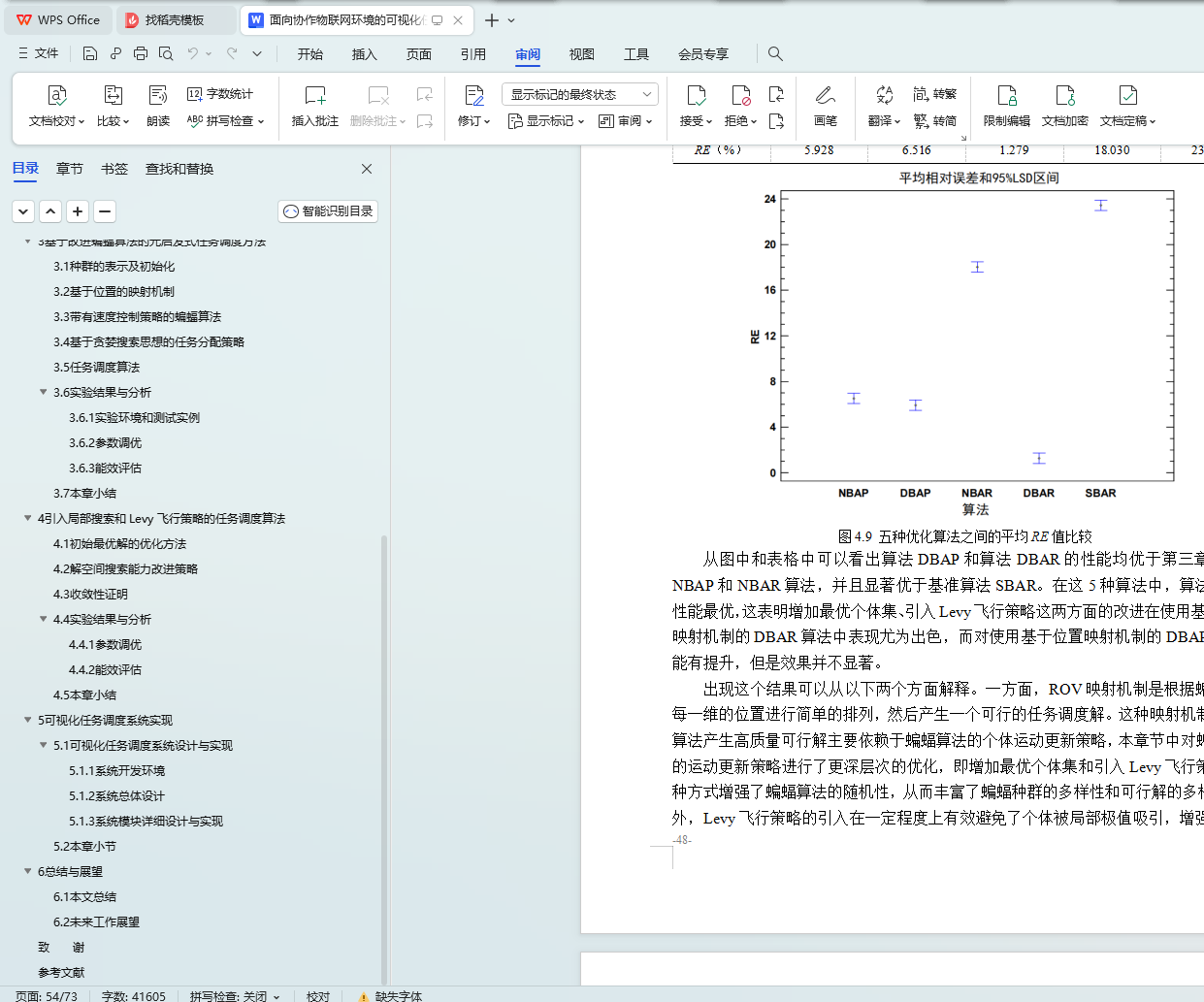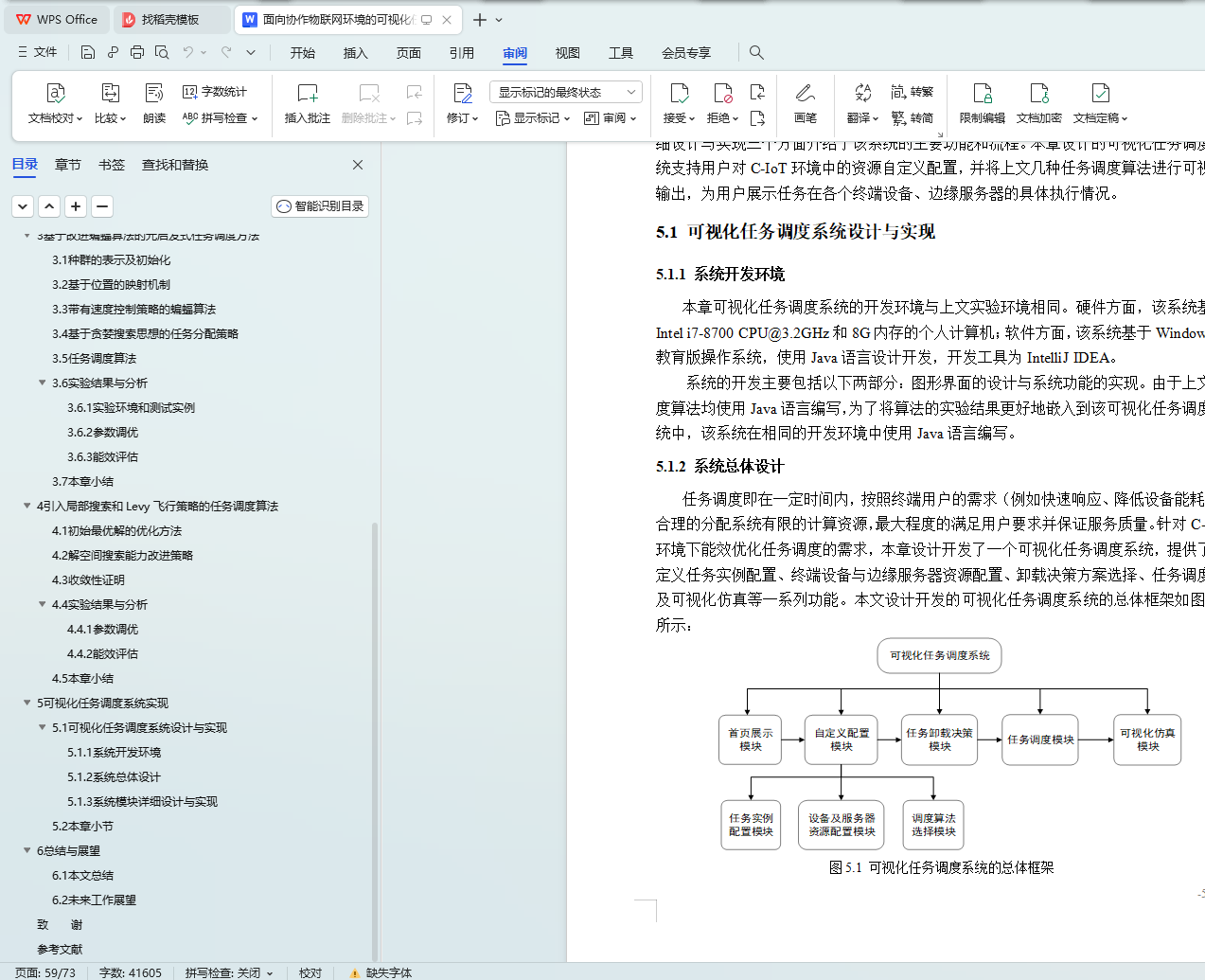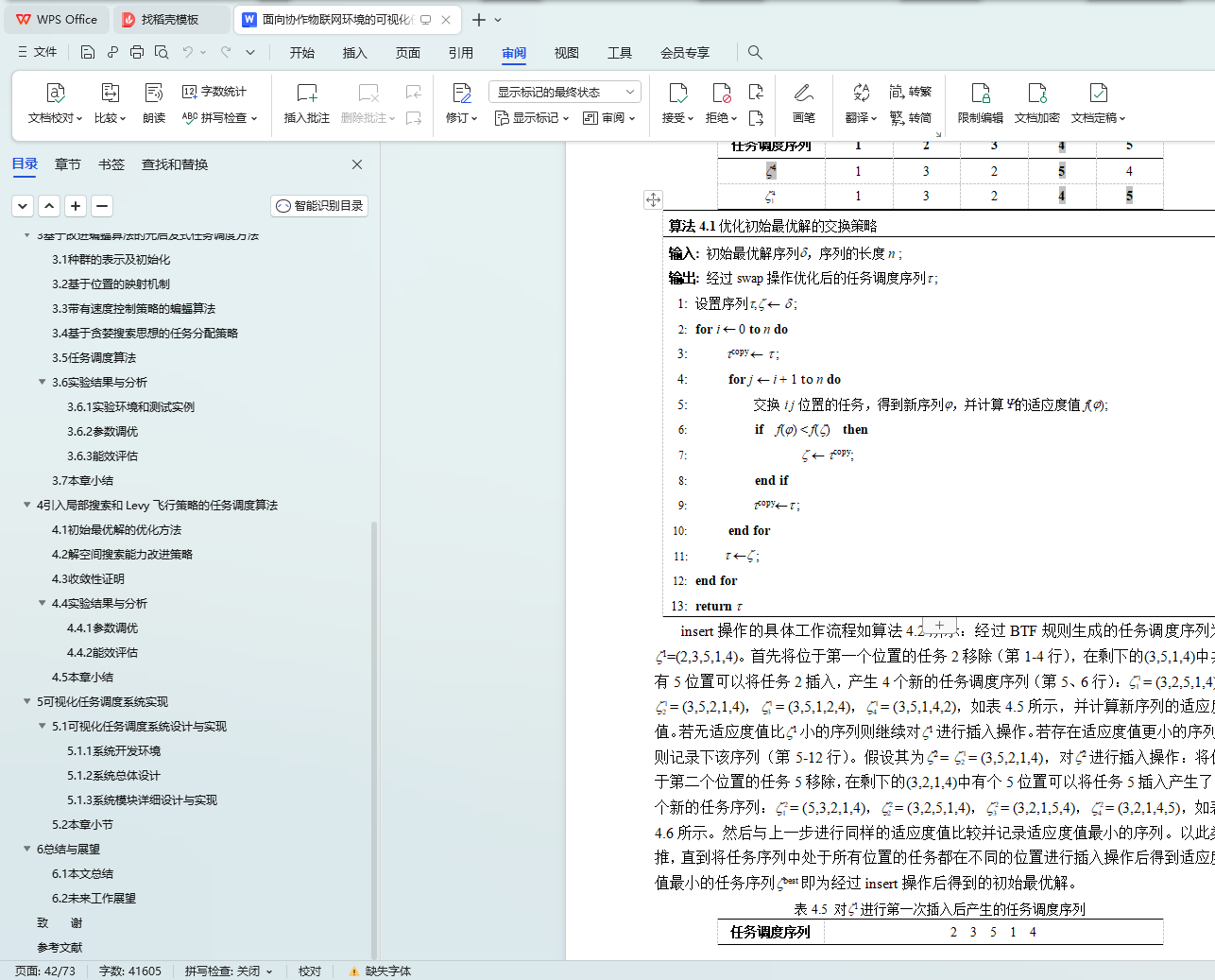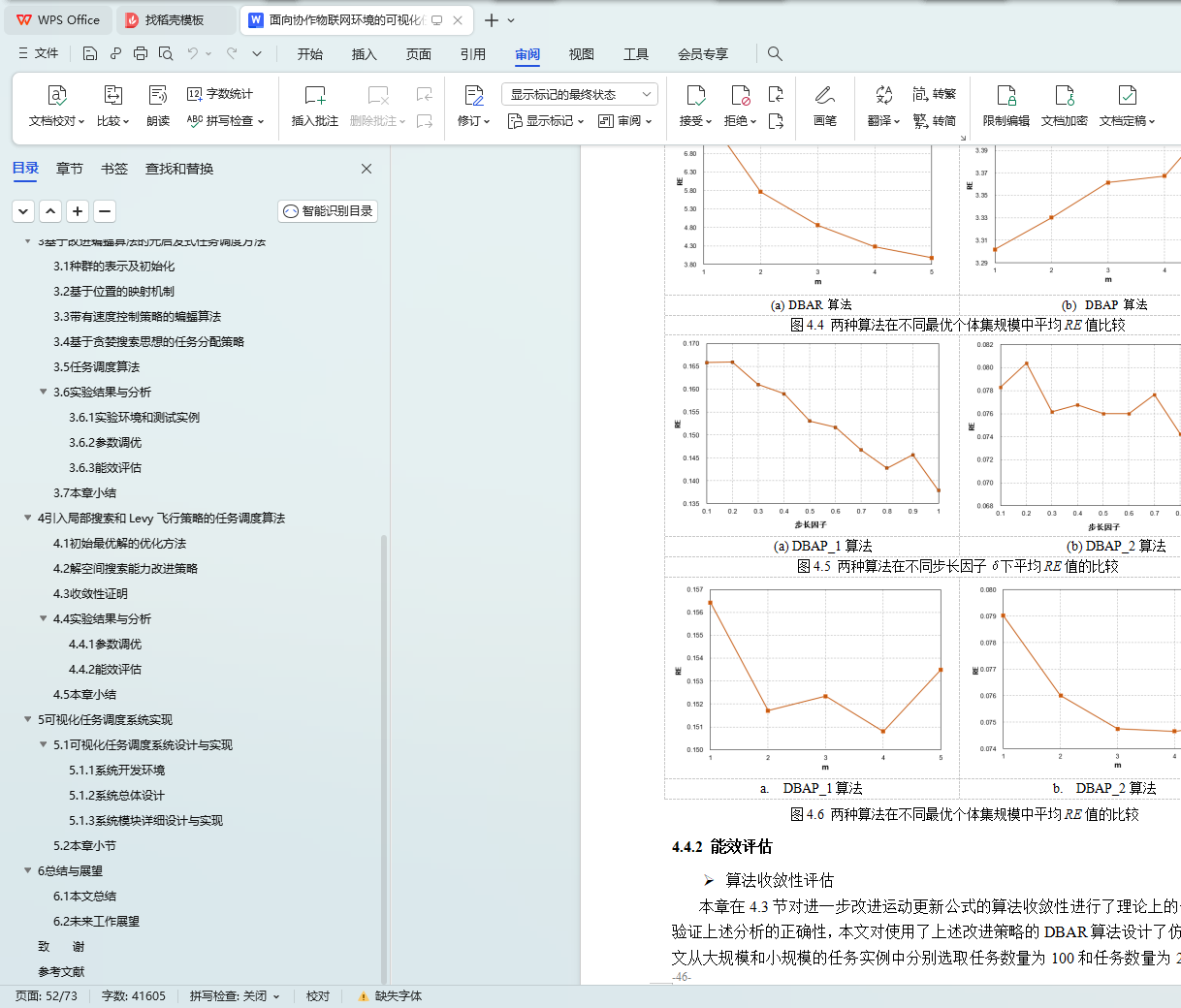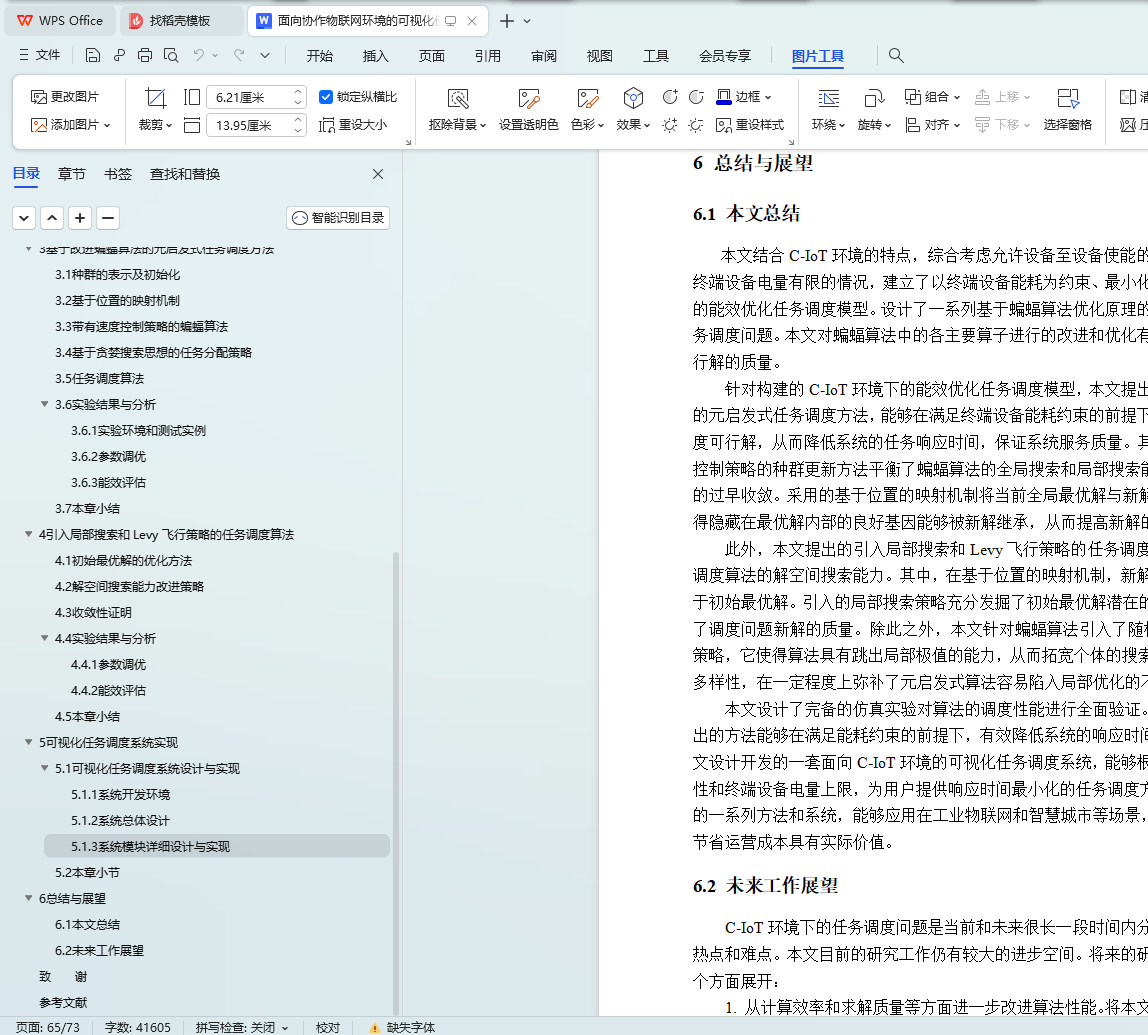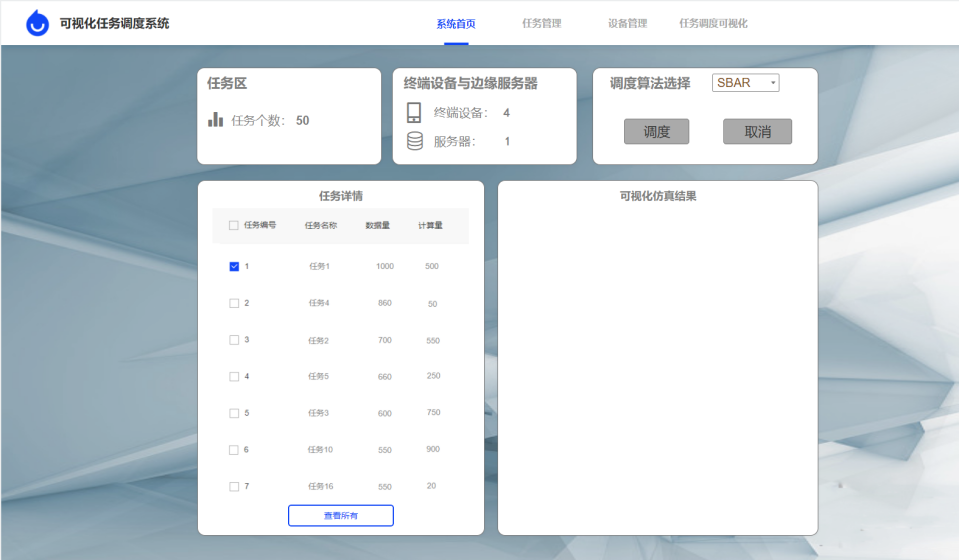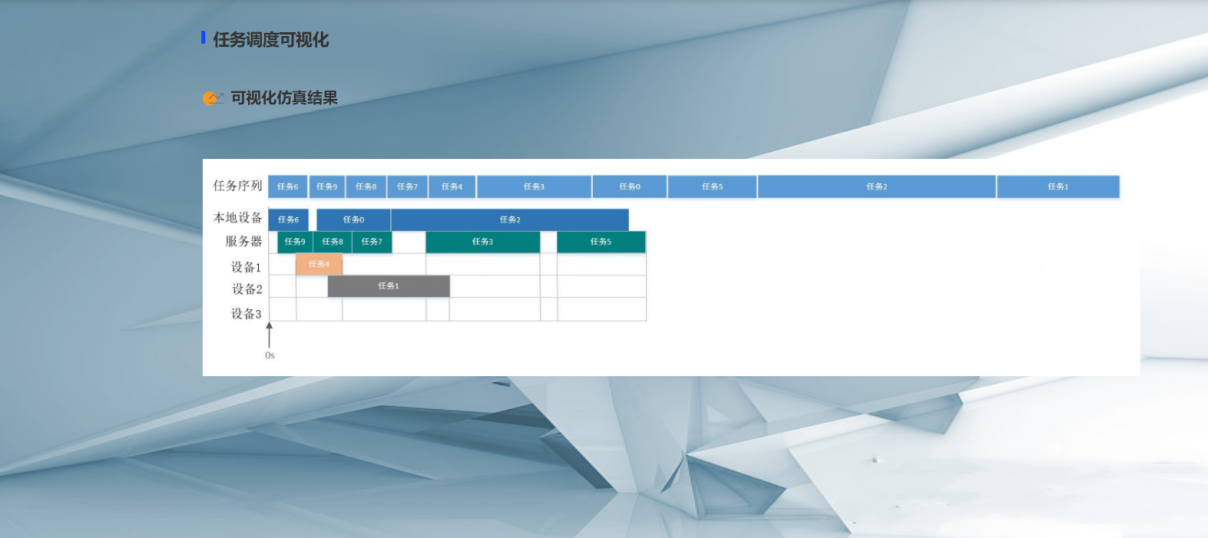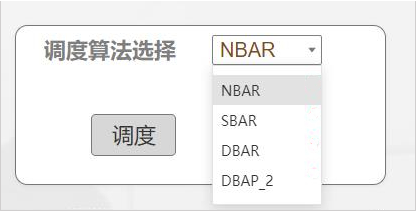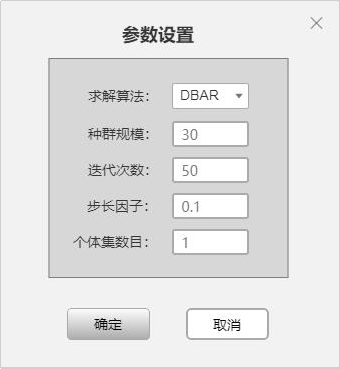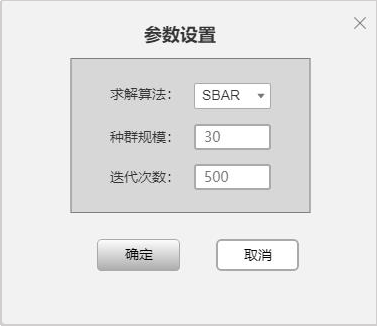面向协作物联网环境的可视化任务调度系统设计与实现 毕业论文+答辩PPT+答辩修改表+答辩问题整理+指导老师意见
摘 要
随着物联网技术的广泛应用,协作物联网(IoT)在工业物联网和智慧城市等实际场景中扮演着越来越重要的角色。然而,终端设备资源有限,给任务调度带来挑战。本文针对协作物联网环境的特点,设计并实现了一套面向协作物联网环境的可视化任务调度系统。
该系统能够根据用户指定的任务特性和终端设备电量上限,为用户提供响应时间最小化的任务调度方案。本文首先建立了以设备能耗为约束、最小化系统响应时间为目标的能效优化任务调度模型,并基于蝙蝠算法的优化原理设计了一组元启发式算法,对上述任务调度问题进行求解。通过对蝙蝠算法中的各主要算子进行改进,获得高质量的能效优化调度解。
本文设计了完备的仿真实验对本文算法的调度性能进行全面评估,并进一步实现了可视化任务调度系统。实验结果表明本文提出的方法能够在满足能耗约束的前提下,有效降低系统的响应时间。本文实现的一系列方法和系统,能够应用在工业物联网和智慧城市等实际场景,对于提升系统能效、节省运营成本具有重要意义。
关键词:协作物联网,可视化任务调度,调度系统,能效优化,元启发式算法
Abstract
With the widespread application of IoT technology, the collaborative Internet of Things (IoT) is playing an increasingly important role in practical scenarios such as the industrial Internet of Things and smart cities. However, the limited terminal equipment resources pose challenges to task scheduling. According to the characteristics of collaborative Internet of Things environment, this paper designs and implements a set of visual task scheduling system for collaborative Internet of Things environment.
The system can provide users with a task scheduling scheme that minimize response time according to the user-specified task characteristics and the power limit of terminal equipment. In this paper, we first establish the energy efficiency optimization task scheduling model with equipment energy consumption as the constraint and minimizing the system response time as the goal, and design a group of meta-heuristic algorithms based on the optimization principle of bat algorithm to solve the above task scheduling problem. By improving the main operators in the bat algorithm, a high-quality energy efficiency optimization scheduling solution is obtained.
This paper designs complete simulation experiments to comprehensively evaluate the scheduling performance of this algorithm, and further realizes the visual task scheduling system. The experimental results show that the proposed method can effectively reduce the response time of the system while satisfying the energy consumption constraints. A series of methods and systems implemented in this paper can be applied in practical scenarios such as industrial Internet of Things and smart city, which is of great significance for improving the energy efficiency of the system and saving operating costs.
Key word: collaborative Internet of Things, visual task scheduling, scheduling system, energy efficiency optimization, meta-heuristic algorithm
目 录
